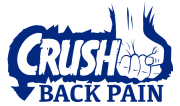Subscribe to the Crush Back Pain Channel
The Three Most Likely Sources of Lower Back Pain
Over 90% percent of lower back pain is musculoskeletal and mechanical in nature. Three structures are usually the source of musculoskeletal lower back pain. The Disc, facet joint, and SI joint.
Before discussing the likelihood that each of these structures is a source of lower back pain accurate diagnosis needs to be covered. Pain is a subjective, sensory experience. Pain cannot be seen on an X-ray or MRI. We can see the structure of the spine. We can see the bones, joints, discs, muscles, nerves, soft tissue, etc. But we cannot see pain. For this reason there is a high rate of false positives with MRI and X-ray imaging. You can’t always blame pain on structural changes seen on imaging studies. The best way to accurately diagnose a structure as a pain generator in the lower back is with diagnostic blocks and provocation discography.
A diagnostic block actually blocks the nerve innervation to the facet joint or the SI joint, so pain cannot be felt. A provocation discography is an image guided procedure where a contrast agent is injected into the nucleus pulposus and pain response is assessed. If a diagnostic block results in a person’s pain being eliminated or decreased then the pain is likely coming from the structure (facet joint or SI joint) that is blocked.
If a provocation discography increases or causes a person’s familiar pain the disc is thought to be at fault.
Based off of diagnostic blocks and provocation discography studies around 20% of lower back pain is related to the SI joint, 36% is related to the facet joint, and 39% is related to the disc. Non-specific lower back pain is really not non-specific. Most of the time the pain will be coming from the disc, the facet joint, or the SI joint. You don’t really need these types of tests to determine the exact pain generator unless you are considering some type of surgical procedure.
With lower back pain the better approach is usually to figure out what types of activities, movement patterns, and positions are causing one or more of these structures to become painful. Then addressing and correcting what’s actually causing the disc, facet joint, or SI joint to become a pain generator.
The next step is building up the muscles and building up the spine so the tissues are more resilient and able to tolerate and withstand activity and movement. This is the long-term solution and works much better compared to chasing the pain. It seems like knowing exactly what tissue is a pain generator and treating that tissue directly would be the answer. With the lower back it’s usually not the case. Yes, you can have pain relief with this approach but symptoms often return. Then a person goes through the entire process of chasing the pain again. Often this process is repeated over and over again for years. Chasing the tissue at fault is not the answer. Determining why the tissue is painful, addressing and correcting why the tissue is painful, then building the lower back tissues up is the answer.
The best way to do this is through exercise and conditioning work so the tissues of the lower back are healthy, resilient, and fully capable of withstanding activity and movement without pain.


